In fact, there are all sorts of «Caliber» and «Kinzhal» that are almost impossible to shoot down and that can be equipped with a nuclear warhead. Why is another missile needed and why is there so much talk about it?
Imagine that you need to hit the target with a stone 10 meters from you. What trajectory will you throw the stone on? Most likely, you just throw it right in the direction of the target:

However, if the target is 50 meters away, throwing the stone «direct fire» will not work. You just don’t have the strength to throw a rock at enough speed to fly 50 meters:

Nevertheless, you can change the way you throw and throw a stone at the arc. With the right skill and precision, a 50-meter shot is real.

Well, actually, that’s what they teach us in school in physical education and physics: you have to throw a rock at about 45 degrees to the horizon for maximum range.
It means that by applying about the same force, you can achieve the flight of the stone at different distances. Just changing the angle of the throw.
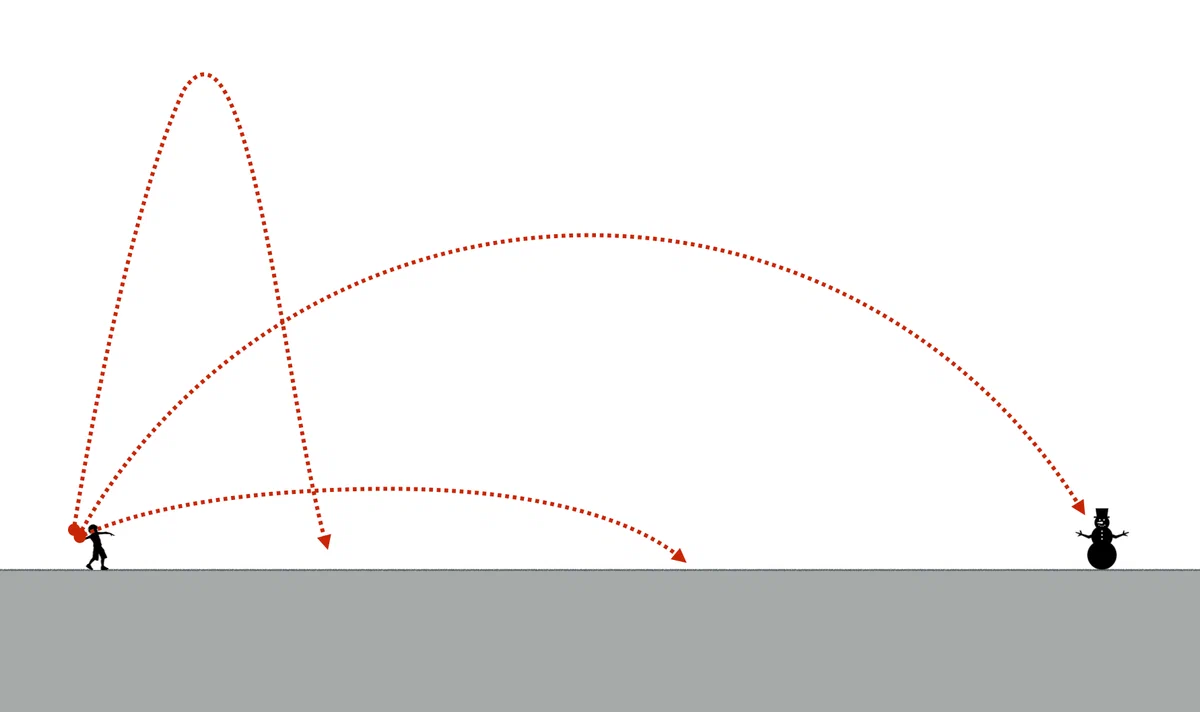
«Calibers» and «Kinzhal» are good weapons. But they have a disadvantage – a relatively small range. Something about 1.5-2 thousand kilometers.
Meaning that such a missile will not reach North America. It just does not have enough fuel. Nor will it be possible to increase the size of fuel tanks, because increasing the amount of fuel increases the weight of the missile. And for more and more mass, you need more and more fuel. There is a kind of a closed circle in which the fuel «drives itself».
What is the way out? The way out is to send the missiles not directly to the target, as do «Caliber» or «Kinzhal», but on that same hinged trajectory or a ballistic arc.
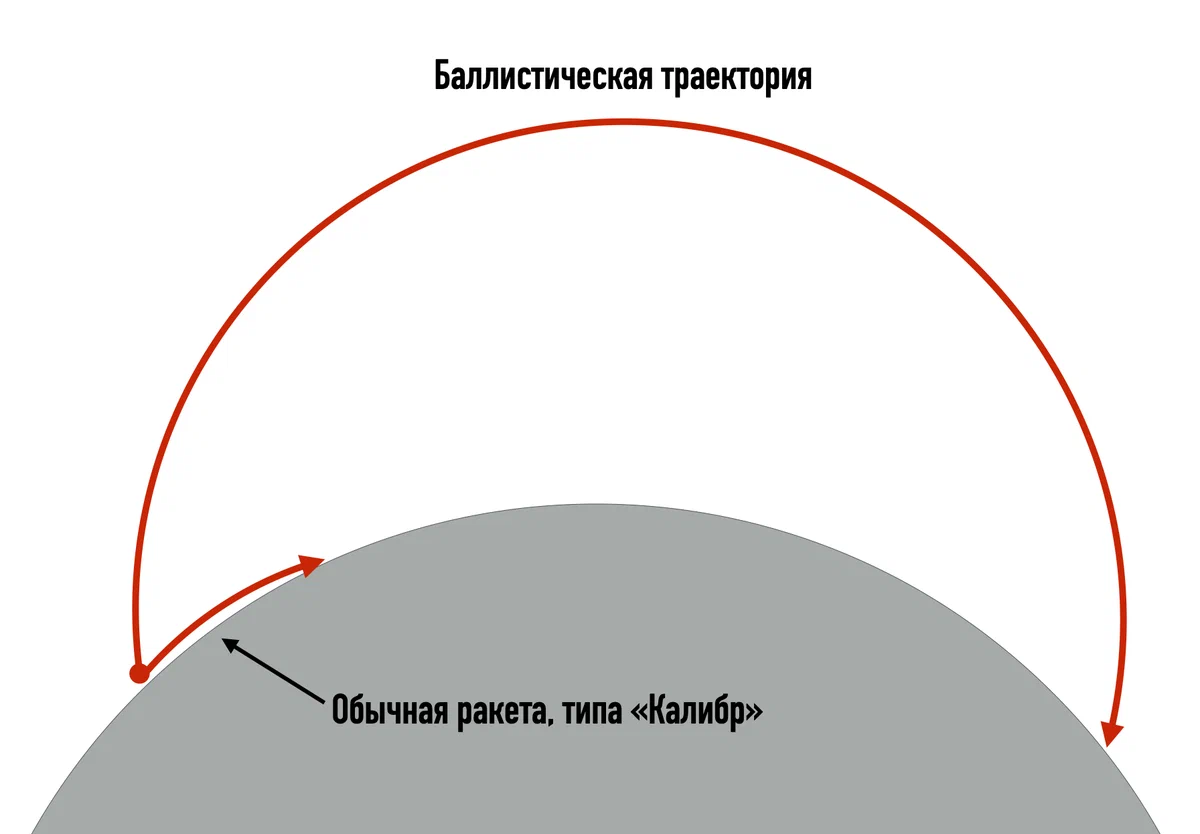
The missiles that send in these trajectories are called ballistic missiles. This is the most formidable weapon, capable of flying to an intercontinental range of 7-10 thousand kilometers and even further.
For example, the famous «Satan» (so it was nicknamed in NATO, we call it «Voivod») in the best of its modification is able to «fly» 16,000 kilometers meaning that it can fly over almost half of the equator (the length of the equator is 40,000 km).

Ballistic missiles usually fly through outer space meaning through a space in which there is no air, which means resistance. Thus, the missle does not need a huge amount of fuel to fly all these 16,000 km with the engine running.
The ballistic missile engine works only at the beginning to overcome the atmosphere (up to an altitude of about 100-150 km). Then it flies by inertia (including only small engines to adjust the trajectory).
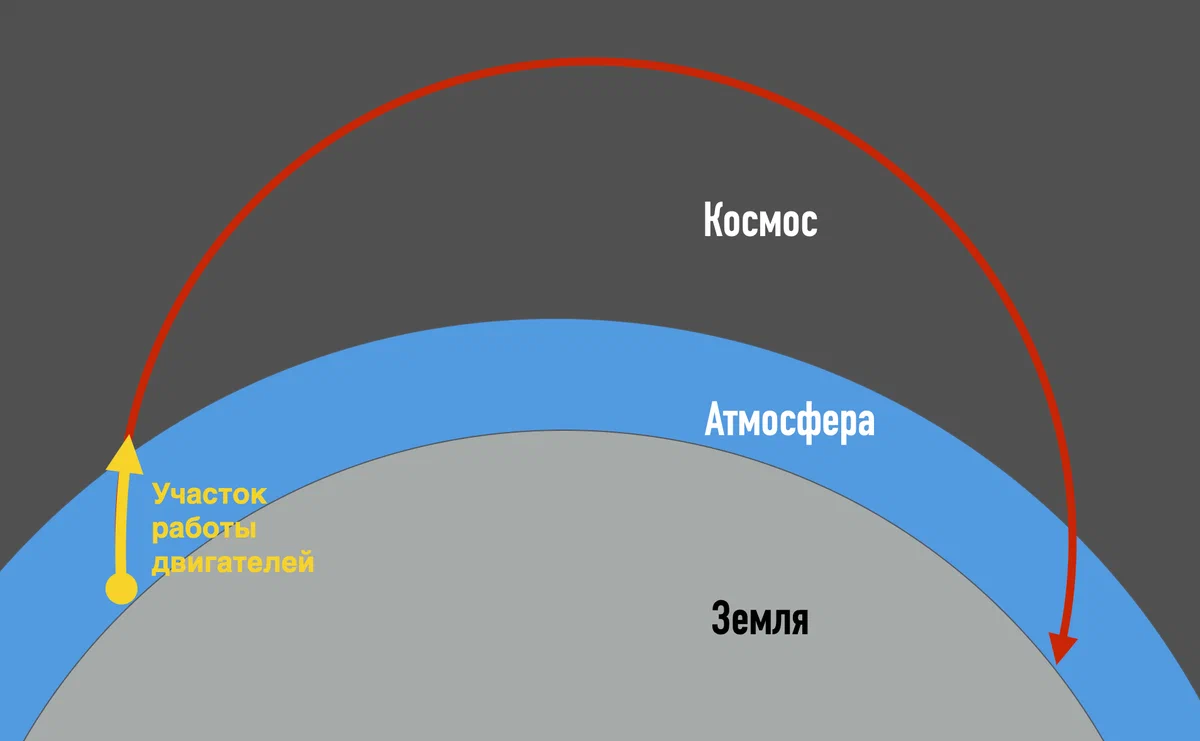
It’s very similar to throwing that very stone. Because the stone has no engine, it receives energy only at the moment of throwing. And then the flight happens by inertia. If you were throwing a stone in an airless space, it would fly away from you for several hundred meters.
So what was the new offer from «Sarmat»?
Intercontinental ballistic missiles have been in service since the middle of the 20th century. Now the Russian army has several types of such missiles.
For example, «Topol-M», which starts with a movable tractor on wheels.

«Bulava», which starts with a submarine, and directly from under the water (secretly).

Or the same «Satan» that starts from a special mine:

In short, there are many ballistic missiles, but they all have one important drawback — the same range.
Let’s say, the most powerful and perfect of all the described missiles — «Satan» — flies 16,000 km. Yes, it is very much and easily reaches the USA.
- For instance, the distance from Moscow to New York is a total of 7,700 km
- And from Buryatia to Texas almost 12,000 km.
Any of these distances «Satan» successfully overcomes. Nonetheless, it will have to fly through the Arctic. Why? Because this is the shortest distance between Russia and the US.
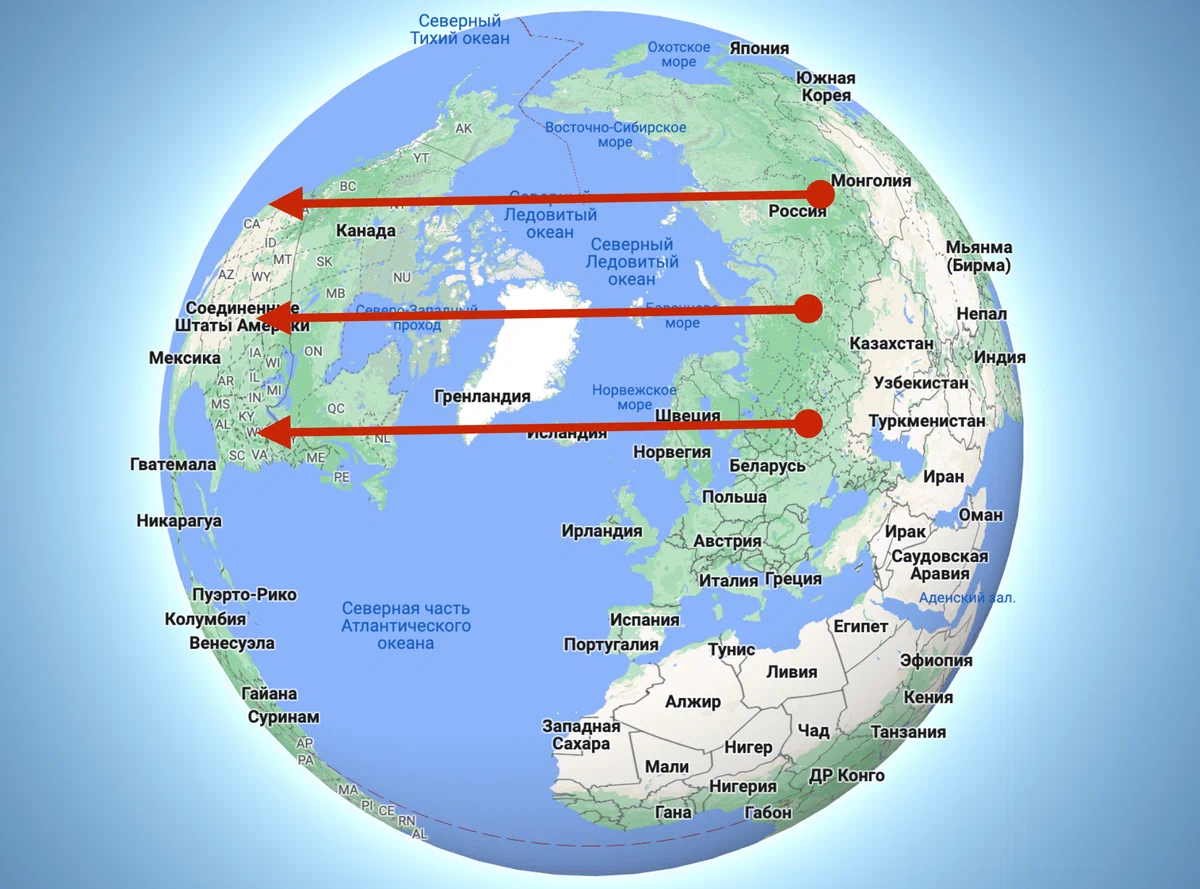
Of course, flying through the Arctic by itself does not have any critical flaws. Just because the United States knows which direction to fly to them. Therefore, on the whole «front» from which it can fly, the Americans have built a missile defense system.
These are both terrestrial systems and ship systems, which are constantly operating in the North Atlantic and Pacific Oceans.

Or here’s what it looks like on a flat map:
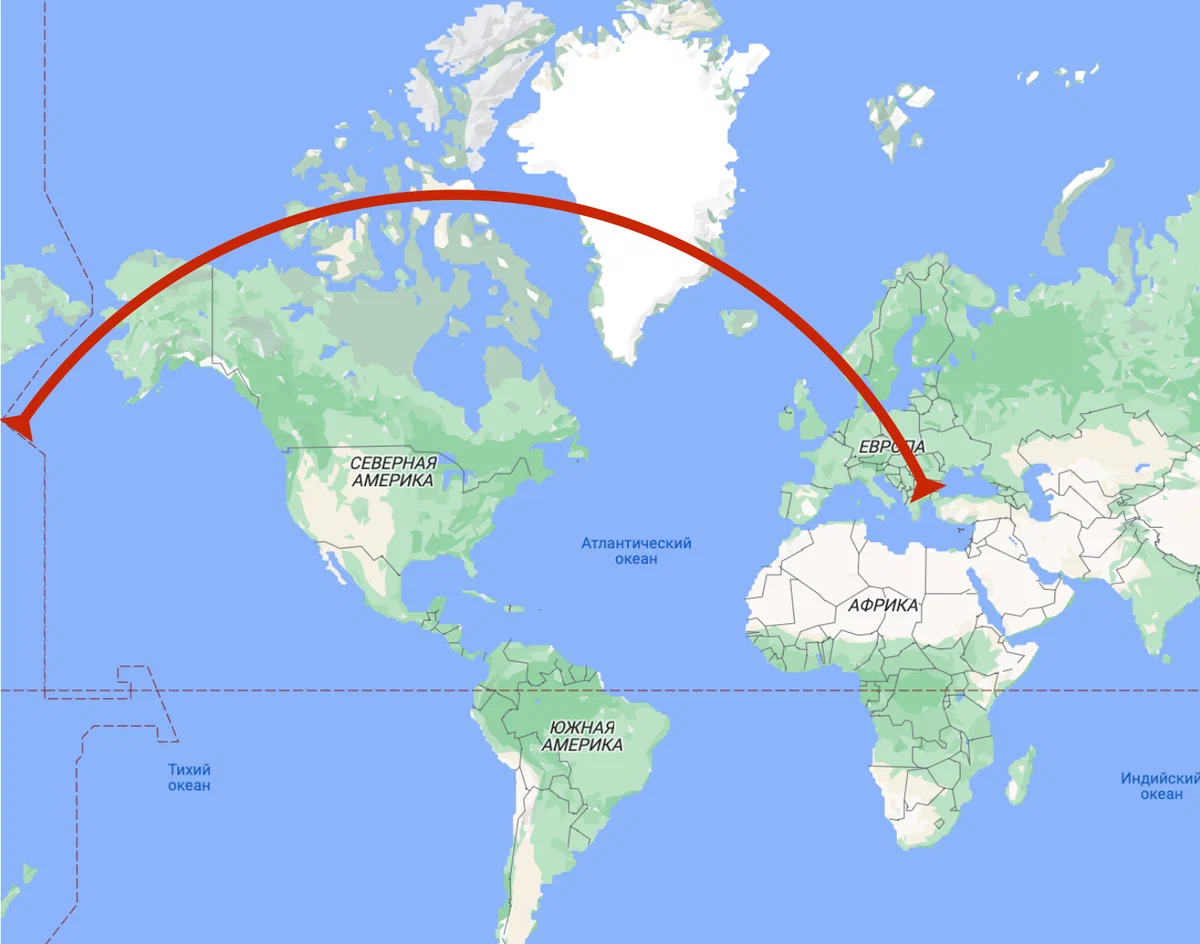
At the same time, as we remember, ballistic missiles fly by inertia. That is, they can not significantly maneuver in flight. Just like the stone you threw can’t fly 90 degrees away.
That is why «Satan» can not «fly around» American ABM. Because in order to fly it — it’s necessary to initially direct the missile to the side, which does not hit the US:

And «Satan» is not able to make such a detour, it has no engines for this:

The Americans knew and understood all this, and therefore for decades they have been building their missile defense along the line indicated above.
But then «Sarmat» came along…
Now you will easily understand the main feature of «Sarmat». It consists of an incredible range of flight, which greatly exceeds the range of the «Satan».
It is reported that «Sarmat» is able to fly to the USA through the South Pole like this:

That is, if earlier missiles aimed in the direction of the United States along the shortest trajectory, now they also aim in the direction of the United States, but along the longest trajectory. The globe is round 🙂

It means, the Americans have built their missile defense system based on the logic of the attack from the north, and from the south they have everything open. They didn’t think Mexico or Chile would use ballistic weapons on them:
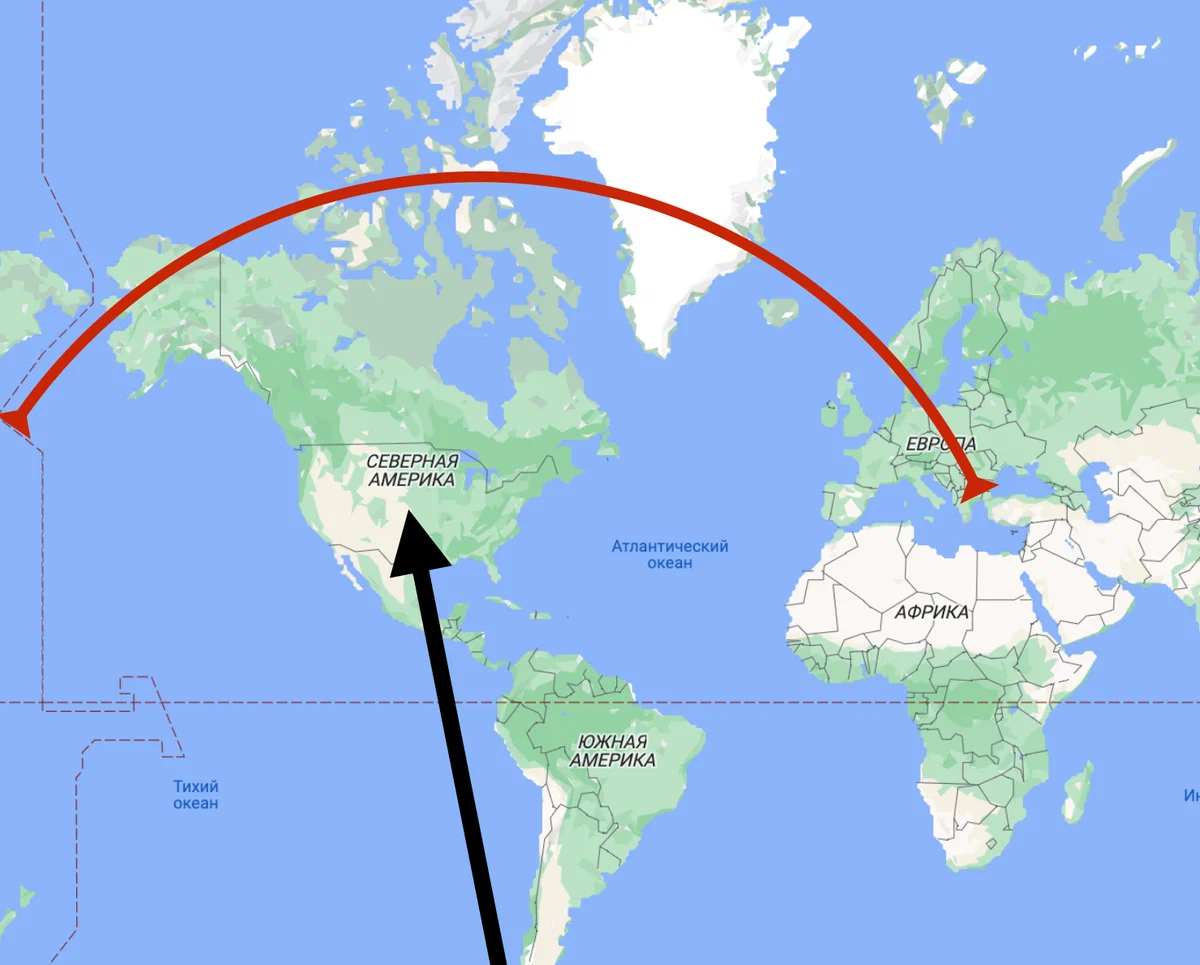
Thus, Russia has kind of bypassed the US from the rear and made the entire US missile defense useless.
Sure, they can start building a new missile defense system, but you have to understand how expensive it is and how long it takes. Even their current (northern) missile defense system has not yet been fully completed. And for this they had the most saturated and prosperous years.
See also: Sarmat: 200 tons of death that will make USA pay and repent.
Now there is a global recession. Not even a recession, but stagflation. It is not clear where to take resources for a new ABM system in such conditions.
Another advantage of «Sarmat»
In addition to the long range, «Sarmat» has also a high speed at the start.
This means that it goes into outer space much faster than all its predecessors. This is because any ballistic missile is most vulnerable as long as it is close to the ground.
In theory «Satan» can be shot down while taking off. Well, hopefully, of course. Shooting down the same «Sarmat» is unlikely to succeed — it just does not have time — it takes to an unreachable height within a few tens of seconds.
